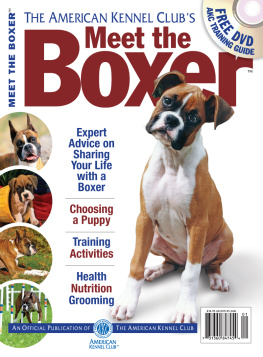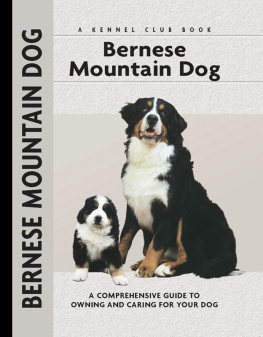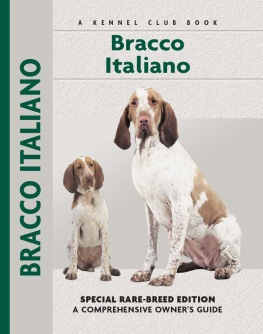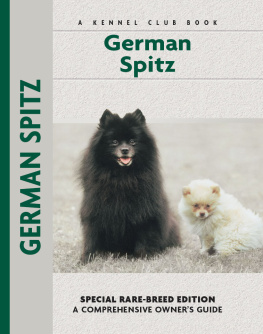Physical Characteristics of the Boxer
(from the American Kennel Club breed standard)
Skull: Slightly arched at top, not rounded, flat nor noticeably broad, with the occiput not overly pronounced. The forehead shows a slight indentation between the eyes and forms a distinct stop with the topline of the muzzle. The cheeks should be relatively flat and not bulge.
Eyes: Dark brown in color, not too small, too protruding or too deep-set.
Nose: Broad and black.
Muzzle: Proportionately developed in length, width and depth; blunt, one-third the length of the head from the occiput to the tip of the nose, and two-thirds the width of the skull.
Ears: Set at the highest points of the sides of the skull are cropped, cut rather long and tapering, raised when alert.
Neck: Round, of ample length, muscular and clean without excessive hanging skin (dewlap). The neck has a distinctly marked nape with an elegant arch blending smoothly into the withers.
Body: The chest is of fair width, and the forechest well defined and visible from the side. The brisket is deep, reaching down to the elbows. The ribs, extending far to the rear, are well arched but not barrel shaped. The back is short, straight and muscular and firmly connects the withers to the hindquarters.
Forequarters: The shoulders are long and sloping, close-lying. The upper arm is long, approaching a right angle to the shoulder blade. The forelegs are long, straight. The pastern is strong and distinct, slightly slanting.

Topline: Smooth, firm and slightly sloping.
Tail: Set high, docked and carried upward.
Hindquarters: The hindquarters are strongly muscled with angulation in balance with that of the forequarters. The thighs are broad and curved. Leg well angulated at the stifle with a clearly defined, well let down hock joint.
Color: The colors are fawn and brindle. White markings should be of such distribution as to enhance the dogs appearance, but may not exceed one-third of the entire coat.
Height: Adult males 22.5 to 25 inches; females 21 to 23.5 inches.
Coat: Short, shiny, lying smooth and tight to the body.
Feet: Compact, turning neither in nor out, with well arched toes.
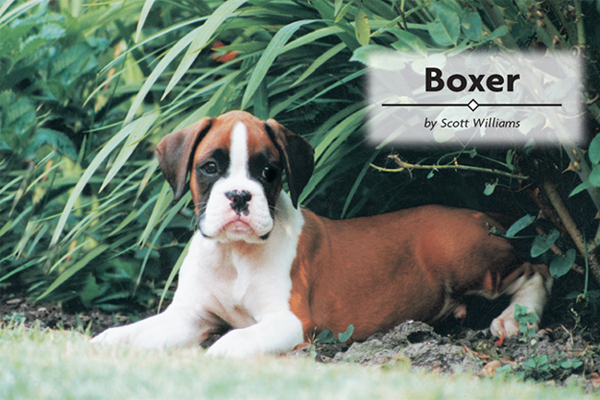
Contents

Discover the origins of one of the worlds most successful creations, as you meet the foundation breeders of Germany and follow the Boxers triumphant rise to fame in the US and beyond, meeting special dogs along the way.

Find out if the Boxer is the ideal dog for you. Why have so many people selected the Boxer as their breed of choice? This chapter describes the breeds special personality, its versatility, intelligence, trainability and much more!

Learn the requirements of a well-bred Boxer by studying the description of the breed as set forth in the American Kennel Clubs breed standard. Both show dogs and pets must possess key characteristics as outlined in the breed standard.

Be advised about choosing a reputable breeder and selecting a healthy, typical puppy. Understand the responsibilities of ownership, including home preparation, acclimatization, the vet and prevention of common puppy problems.

Enter into a sensible discussion of dietary and feeding considerations, exercise, grooming, traveling and identification of your dog. This chapter discusses Boxer care for all stages of development.

By Charlotte Schwartz
Be informed about the importance of training your Boxer from the basics of housebreaking and understanding the development of a young dog to executing obedience commands (sit, stay, down, etc.).

Discover how to select a qualified vet and care for your dog at all stages of life. Topics include vaccinations, skin problems, dealing with external and internal parasites and common medical and behavioral conditions.

Consider the care of your senior Boxer, including the proper diet for a senior. Recognize the signs of an aging dog, both behavioral and medical; implement a special-care program with your vet and become comfortable with making the final decisions and arrangements for your senior Boxer.

Enter the world of showing dogs. Learn about the American Kennel Club, the different types of shows and the making of a champion, and find out about agility, obedience and other performance events.
KENNEL CLUB BOOKS BOXER
ISBN 13: 978-1-59378-206-1
Copyright 2003 Kennel Club Books An Imprint of I-5 Press A Division of I-5 Publishing, LLC
3 Burroughs, Irvine, CA 92618 USA
Cover Design Patented: US 6,435,559 B2 Printed in China
All rights reserved. No part of this book may be reproduced in any form, by photostat, scanner, microfilm, xerography or any other means, or incorporated into any information retrieval system, electronic or mechanical, without the written permission of the copyright owner.
14 13 12 11 10 6 7 8 9 10
Photos by Norvia Behling, Doskocil, Theresa Fico, Isabelle Franais, Carol Ann Johnson, The Journal of the American Veterinary Medicine Association, Jeff Michals, Mikki Pet Products, Alice Pantfoeder, Antonio Philippe, Alice Roche, Paul Scott, M.A. Stevenson, DVM, Nikki Sussman, and Alice van Kempen.
Illustrations by Patricia Peters.

Todays elegant Boxer is light years from the breeds ancestors who were bred to hunt boars, pigs and deer. The Boxer breed, beloved around the world, excels as a show dog, obedience performance dog and, of course, as a home companion and guard dog.

Most dog historians acknowledge that the Boxer derives from Bullenbeisser ancestry. These Bullenbeissers, or bull-biters, were hunting dogs, mostly used on pig, boar and deer. Such wild-game expeditions often cost the lives of many dogs, as the hunt was gruesome and grueling for humans and dogs alikenot to mention the boars! Some sources say that these massive medieval dogs had erect ears and huge teeth, which would be used to hold the animal by the nose. Its probable that hunters were cropping ears the way we do today, since such a custom would be apropos for these hunting dogs.

Boxers of fine quality are available not only in Germany but also throughout Europe, America and elsewhere. This is Int. Ch. Formula Miller of Norwegian and Canadian origin.








